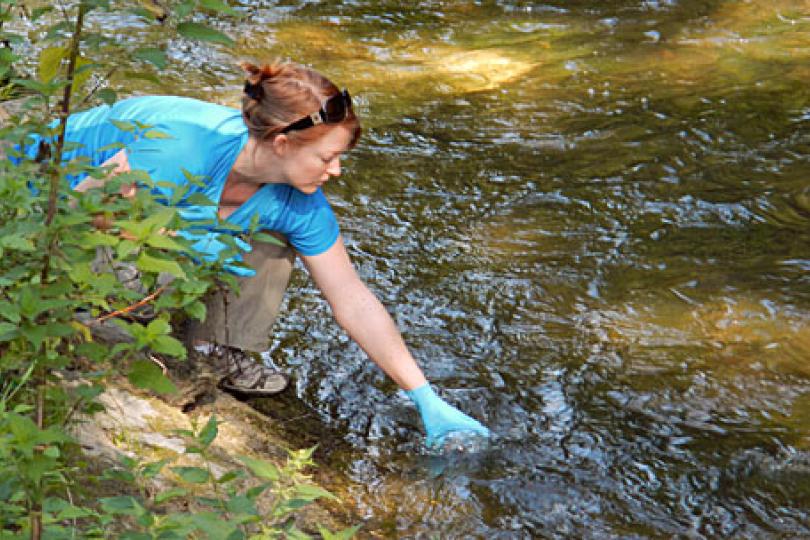CSI for Biodiversity
For the past three years I have been involved in several projects to test the utility of detecting species in their environment simply by finding their DNA they leave behind. Using environmental DNA (eDNA) to detect species is at the forefront of new tools in the tool box for conservation and restoration. Environmental DNA detection of species particularly from water can provide geographic information of presence for species of concern, invasive species and can even be used to do whole community assessments. A clear demonstration across a broad array of species and freshwater habitats worldwide has been made and has culminated in a special issue just released by Biological Conservation, “Environmental DNA: A powerful new tool for biological conservation” edited by C. Golberg, K. Strickler and D. Pilliod.
In the special issue my collaborators and I advance some of the fundamental and technical aspects for applying this tool in freshwater systems. Specifically, we tested different methods for how to concentrate DNA from water samples and purify the DNA for detection. Our results demonstrate that particular methods, and specific combinations of these methods, have a higher chance at detecting species. These results give practitioners interested in applying this tool clear evidence of which methods should be used depending on the organism sought for detection based on current technology.
My additional research and contributions to this field of research have been focused on detection of macroinvertebrates such as mussels and insects in rivers and lakes. Macroinvertebrates are an important group because they are used to biomonitor water quality all over the world. Biomonitoring with macroinvertebrates in freshwaters primarily works by relying on detection of the presence of sensitive or tolerant family, genera or species in the community. This local community data is then interpreted as indicating health or impairment of a system compared to an undisturbed place. Conventional methods used to detect macroninvertebrate species rely heavily on lethal sampling methods, and it is very labor and time intensive to morphologically identify species. Our research team has demonstrated that we can use a genomic process to detect macroinvertebrates spanning many different species and that DNA can be transported over large distances (10-12 km) in rivers. Our demonstration that this genomic tool provides an efficient and non-lethal way to do biomonitoring of freshwater systems in now gaining interest from funding and management agencies all over the world.
The surface and power of this tool has only been scratched and there remains room for substantial innovation and improvement. For example, we do know that eDNA methods used for species detection greatly increase the power of field surveys for rare and elusive species. There are, however, many inferential challenges to interpreting eDNA detections, including spatial and temporal considerations, relationships to abundance, the potential for false positive and false negative detections. Challenges which all need to be understood in order to move forward with producing robust, defensible eDNA studies for understanding the distribution of freshwater biodiversity. Projects addressing any one of these current challenges will be well suited to collaborations with stakeholders in the water community and I welcome collaborations across the spectrum to address issues on invasive species detection, effects of pollution, hydropower and land-use on water ecosystems.
Additional Resources
Choice of capture and extraction methods affect detection of freshwater biodiversity from environmental DNA (open access until March 22, 2015, no subscription needed to read)
Editor's note: This special issue was orginally published as an open access publication. If you need access to the issue or articles, please contact Kristy Deiner. For more about open access research and publishing, please see our webinar with 2013 Switzer Fellow Meredith Niles and accompanying resource list.
Utility of Environmental DNA for Monitoring Rare and Indicator Macroinvertebrate Species (open access, no subscription needed to read)
Transport Distance of Invertebrate Environmental DNA in a Natural River (open access, no subscription needed to read)

